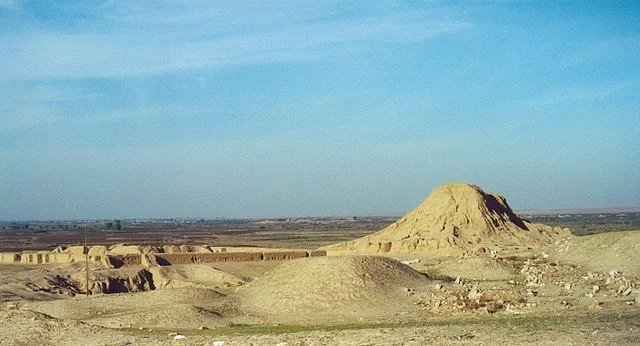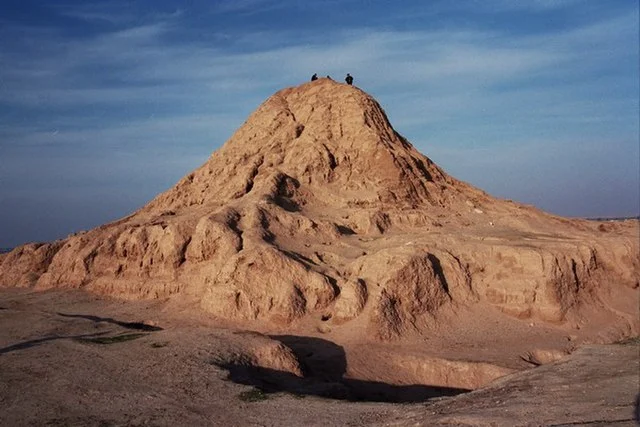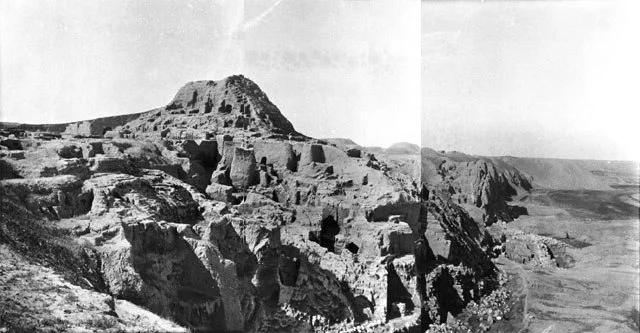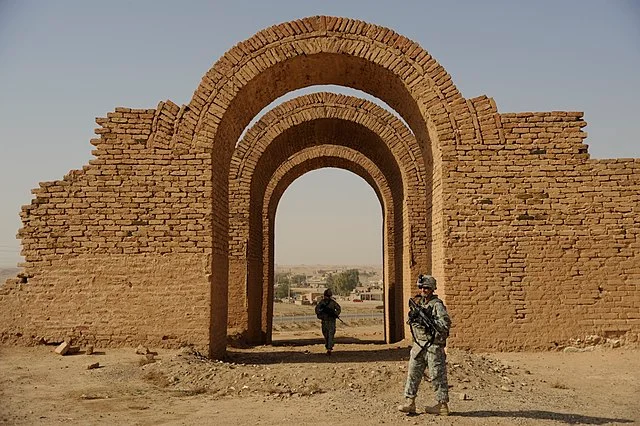Assur, also known as Ashur, was an ancient city, religious capital, and the namesake of the Assyrian Empire. It is located on the western bank of the Tigris River in northern Mesopotamia, in modern-day Iraq. The city holds immense historical significance due to its role as a political and religious center over several millennia. Assur was the heart of the Assyrian empire and a city of great wealth and power. Its ruins, including temples, palaces, and city walls, provide valuable insights into Assyrian culture and history.
Get your dose of History via Email
Historical Background of Assur Iraq

Assur’s discovery dates back to the 19th century when archaeologists began excavating the site. Austen Henry Layard, an English archaeologist, conducted initial explorations in the mid-1800s. Walter Andrae later led extensive excavations in the early 20th century. The city was built by Assyrians, with its earliest layers dating back to the 3rd millennium BC. Assur flourished as a trading hub and religious capital dedicated to the god Ashur.
Throughout its history, Assur was inhabited by various empires and peoples. It was the Assyrian Empire’s religious capital before becoming the political capital as well. The city saw significant growth during the reign of Shamshi-Adad I in the early 2nd millennium BC. Later, it was conquered by the Babylonians and the Medes, marking the end of the Assyrian Empire.
Assur was not only a political center but also a religious one. The city’s ziggurat and the temple dedicated to the god Ashur were central to Assyrian religious life. The city’s strategic location on the Tigris River contributed to its importance in trade and military campaigns. Assur’s significance is also evident in its mention in various historical texts and its influence on the Assyrian identity.
Throughout its history, Assur experienced periods of destruction and rebuilding. The city was sacked by the Babylonians and later by the Medes. Despite these events, Assur remained an important cultural and religious site. The city’s architecture and artifacts reflect the wealth and power of the Assyrian Empire.
Assur’s historical importance is also marked by significant events. It was the scene of royal burials, religious ceremonies, and political gatherings. The city’s fall to the Medes marked the end of the Assyrian Empire, a pivotal moment in Near Eastern history. Today, Assur’s ruins stand as a testament to the city’s past glory and its role in shaping the history of the region.
About Assur Iraq

Assur’s ruins reveal a city with a complex layout and impressive architecture. The city was fortified with walls and gates, protecting its numerous temples, palaces, and administrative buildings. The most prominent structure was the ziggurat, dedicated to the god Ashur, which towered over the cityscape.
The construction of Assur employed various materials, including mud bricks and stone. The city’s buildings often featured ornate decorations, such as wall reliefs depicting gods, kings, and mythological creatures. The use of glazed bricks added color and grandeur to the city’s appearance.
Architectural highlights of Assur include the Old Palace and the New Palace, which served as royal residences and administrative centers. The Temple of Ashur, with its ziggurat, was the religious heart of the city. The city also had an elaborate water management system, including canals and aqueducts, showcasing advanced engineering skills.
Assur’s construction methods reflected the technological advancements of the time. The Assyrians were skilled in using available resources to create durable and imposing structures. The city’s layout was planned to accommodate religious processions and to facilitate administrative functions.
The craftsmanship of Assur’s builders is evident in the detailed carvings and inscriptions found throughout the site. These elements not only served decorative purposes but also conveyed religious and political messages. The city’s architecture is a rich source of information about Assyrian society and its priorities.
Theories and Interpretations

Several theories exist about Assur’s use and significance. Some scholars suggest that the city was primarily a religious center, while others emphasize its political role. The presence of royal tombs indicates that Assur was also a burial site for Assyrian kings.
Mysteries surround Assur, such as the exact rituals performed in its temples. Archaeologists have had to interpret the city’s layout and artifacts to understand its religious practices. The city’s cuneiform inscriptions provide valuable clues but leave some questions unanswered.
Assur’s role in the Assyrian Empire has been matched to historical records, confirming its importance. The city’s mention in various texts helps to corroborate archaeological findings. Dating of the site has been carried out using methods such as stratigraphy and radiocarbon dating.
Theories about Assur’s decline focus on external invasions and internal strife. The city’s fall to the Medes is often seen as a result of weakened Assyrian power. However, some suggest that economic factors also played a role.
Interpretations of Assur’s history are continually evolving as new discoveries are made. Ongoing research and excavations contribute to a deeper understanding of the city’s past. Assur remains a subject of fascination for historians and archaeologists alike.
At a glance
Country: Iraq
Civilization: Assyrian
Age: 3rd millennium BC to the end of the 7th century BC
Source:

